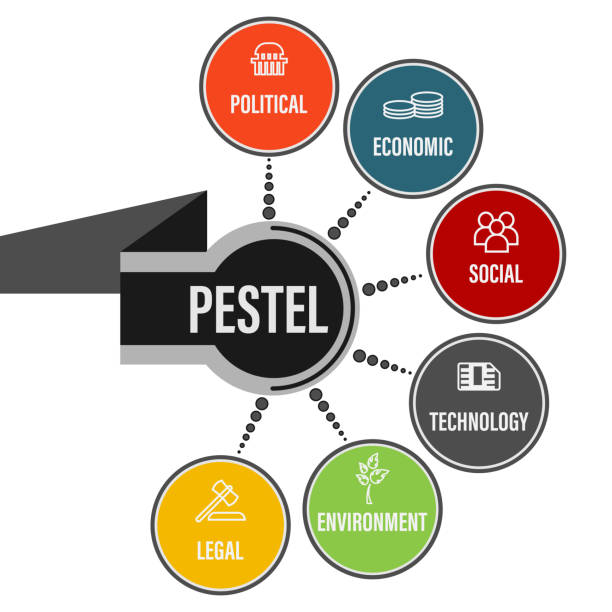The company cannot influence or control macro environmental factors, but the repercussions of these elements should
be understood and factored into the creation of its strategy. PESTLE analysis is the most frequent methodology
for evaluating macro environmental factors that can effect business.
The primary areas of analysis are listed below to understand what PESTLE analysis is all about (Table 1):
| P (Political) | E (Economic) |
| S (Social) | T (Technological) |
| L (Legal) | E (Environmental) |
Let's look at each area that is the subject of the PESTLE analysis.
Political factors include the political environment and stability, trade policy, tax policy, and the country's foreign policy, among others. The analysis of these elements allows the company to establish how government policy influences the industry in which it works and, as a result, to evaluate the impact of these factors on the company.
Let's look at the economic factors. Interest rates, inflation, economic growth, exchange rates, unemployment rate, household disposable income, and other economic parameters are included in this category. These variables might have a direct and indirect impact on the company. These factors can alter people's purchasing power and, as a result, are linked to changes in supply and demand patterns in the economy.
Now consider the social factors. This category of factors focuses on the social environment and includes elements such as demographic indicators, cultural values, population lifestyle, and so on. The analysis of these characteristics allows for the determination of the population's current and future demands, as well as the adaptation of products and services to the demands of specific clients.
The next area of analysis is technological factors. This category includes elements such as the rate of technological advancement, the appearance of new technologies and materials, services and goods, and any other technological changes that may affect corporate growth. A corporation can make proactive decisions, streamline processes and expenses, manufacture competitive products, and more with technological awareness.
Now let's turn to the legal factors. Regulatory and legal issues, such as numerous standards, legislation, regulatory requirements, and so on, that regulate or affect the firm's activities, both locally and internationally, if the company engages in foreign activity, are included in this category.
And the last area of analysis are environmental factors. Environmental considerations have recently become more relevant as a result of the growing importance of corporate social responsibility and a focus on long-term sustainable growth. Indicators of environmental pollution and emissions that meet specified requirements, recycling methods, and waste management, and so forth are among these aspects.
We'll now go over how the analysis is conducted out.
The identification of factors and the gathering of data are the first steps in the analysis. The factors are also ranked and prioritized. The elements can be ranked using a weighted average assessment approach with the help of internal experts, and assessment indicators such as relevance and impact can be used. Relevance is a measure that reflects the relationship between a specific factor and the company's business, or how essential a given aspect is to the company.
Impact is a measure that shows how much of an impact a specific aspect can have on a company's bottom line (positive or negative impact). The relevance and impact criteria are multiplied to get the final weighted score for each element. The following is how the results are interpreted:
- variables with a large negative value are business-relevant elements that can have a strong negative impact - factors
with a high positive value are business-relevant variables that can have a strong positive impact;
- business opportunities are represented by factors with a high positive value. As a result of the PESTEL analysis,
you may receive a basic picture of the firm's external environment and identify critical elements that can have both
a good and negative impact on the organization.
As a result, PESTEL analysis is a useful tool for establishing the foundation for making the best management decisions.
